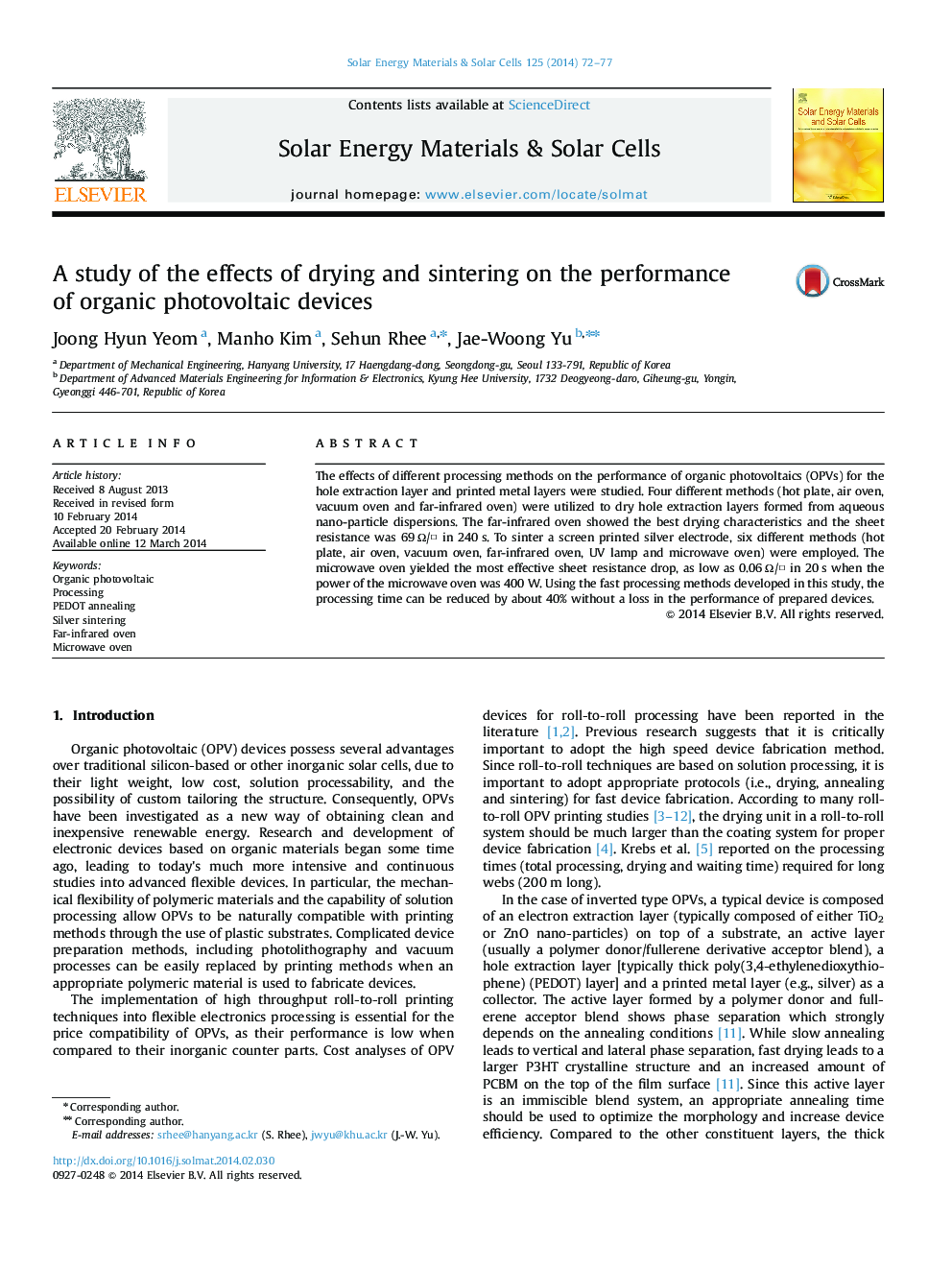| Article ID | Journal | Published Year | Pages | File Type |
|---|---|---|---|---|
| 78085 | Solar Energy Materials and Solar Cells | 2014 | 6 Pages |
•The effects of different processing methods on the performance of OPVs were studied.•The processing time can be reduced about 40% without losing the performances of the prepared devices.•The far-infrared oven for PEDOT and the microwave oven for silver electrode provide optimized fast processing conditions.
The effects of different processing methods on the performance of organic photovoltaics (OPVs) for the hole extraction layer and printed metal layers were studied. Four different methods (hot plate, air oven, vacuum oven and far-infrared oven) were utilized to dry hole extraction layers formed from aqueous nano-particle dispersions. The far-infrared oven showed the best drying characteristics and the sheet resistance was 69 Ω/□ in 240 s. To sinter a screen printed silver electrode, six different methods (hot plate, air oven, vacuum oven, far-infrared oven, UV lamp and microwave oven) were employed. The microwave oven yielded the most effective sheet resistance drop, as low as 0.06 Ω/□ in 20 s when the power of the microwave oven was 400 W. Using the fast processing methods developed in this study, the processing time can be reduced by about 40% without a loss in the performance of prepared devices.
Graphical abstractFigure optionsDownload full-size imageDownload as PowerPoint slide
